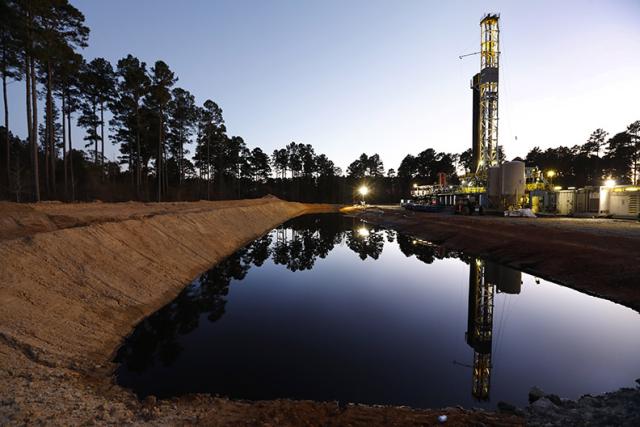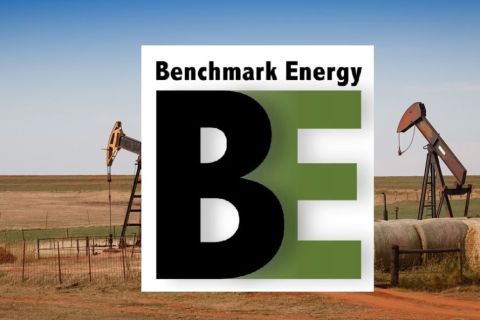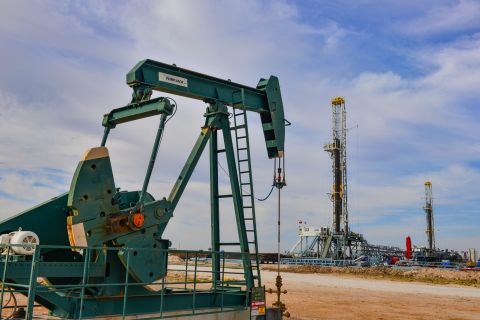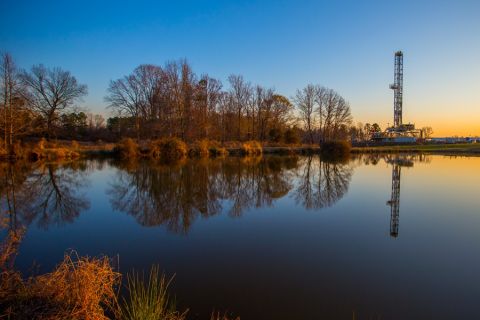
Haynesville producers recently gathered at Hart Energy’s DUG Haynesville conference and exhibition in Shreveport, La., to discuss how to improve efficiency, cut costs and drive profitability.(Source: Tom Fox/Hart Energy)
SHREVEPORT, La.—Twenty years ago, the oil and gas industry pretty much wrote off Louisiana’s Austin Chalk play. Today, the area is quickly emerging as a play that many operators are keeping their eyes on.
“Numerous upstream operators have acquired large leaseholds across acres thought to be productive for the Austin Chalk play in Louisiana, and energy investors should take note,” according to an October 2018 Seeking Alpha article. “Austin Chalk well economics in South Texas are clearly in the Tier 1 category, so any emerging play with a chance to replicate that success needs to be kept on your radar.”
And take note they did. Operators are quickly scooping up the cheap acreage positions. For example, Marathon Oil spent $250 million for about 260,000 net acres (under $850/acre) and spud its first exploration well in the play last year (results are expected this year).
Speakers at Hart Energy’s recent DUG Haynesville conference and exhibition shared insights on this promising prospect. Presenters included Charles Goodson, president and CEO of PetroQuest Energy Inc.; Edward L. O'Brien III, senior economist for the Louisiana Department of Natural Resources; and Bryan Hanks, president of Beta Land Services LLC.
Why Now?
Fracking technology improvements, inexpensive land and an established infrastructure are what have made the Austin Chalk a desirable development.
Goodson explained how the Austin Chalk is in “its third wave,” with companies coming and going (and drilling) since the late 1990s.
“In what could be referred to as the second wave, Anadarko drilled three modern horizontal wells approximately eight years ago, completing these noncommercial wells without fracking any. The Dominique #1 well in Avoyelles Parish produced a disappointing 14,000 barrels of oil. After disappointing results in all three unfracked horizontals, the company’s leases either expired or were dropped in 2014,” Goodson said.
“Shortly thereafter, EOG leased essentially the same area and drilled the EOG Eagles Ranch well offsetting the Anadarko Dominique #1. EOG fracked its lateral, and the well, by Louisiana Department of Conservation records, has produced approximately 150,000 barrels of oil to date. While not yet economical, that’s quite an impressive uplift of 10-to-1. The early flow rates of this well being over 2,000 barrels of oil per day is essentially what’s started the next phase of the Louisiana Austin Chalk play.”
Looking at the play today, with little more to rely on, the play has been one of the most active in terms of leasing in the country, Goodson said, whose company has approximately 25,000 acres in the Chalk.
“A lot of people scratch their head and ask why. Simply put, it is oil and very inexpensive compared to other oil-focused trends today that can command $30,000 per acre. If successful, the Austin Chalk in Louisiana is scalable for even the largest energy companies like Marathon, Conoco and EOG,” he said.
“For a company like PetroQuest, it is in our backyard with our headquarters in Lafayette, Louisiana, and certainly no riskier than other traditional projects in South Louisiana. When you dig into the facts, there are unfracked vertical and horizontal wells that have EURs ranging from 500,000 to 1,000 MMboe, thereby indicating there are producible hydrocarbons in the Chalk. If you understand why there exists such a wide variance in historical production, which we think we do, PetroQuest focused on quality versus quantity when assembling its acreage.”
With the land grab essentially over until leases begin to expire in three to five years from now and as more data become available, companies will see 2019 as materially more active than past years, according to Goodson.
“We’re very excited with the play. We like the acreage we’re in. I think this will be one where you need a lot of cooperation with the industry to share data, whether it’s through the service side or from the operator side,” he said. “But ironically, there are really not a lot of companies in it. You’ve got the large companies—Conoco, Marathon, EOG, Cimarex and Devon, and a number of private companies, down to a company the size of PetroQuest.”
E&P
“Excitement” was definitely the buzz word around the Austin Chalk topic, as O’Brien also noted the company’s excitement over the play.
“We’re very excited about the Austin Chalk. It’s a great play,” he said. “But we’re really excited about the east play in Louisiana. We’re starting to see more and more drillers come in and explore what’s going on in the Avoyelles Parish and Felicianas.”
There are many areas being explored in this area. Historically, the Austin Chalk has been a prolific oil producer with significant associated casing-head gas production, O’Brien said. As of 2018, there have been 54.9 MMbbl of oil produced from the Austin Chalk and 246 Bcf of gas, according to his presentation.
O’Brien added, “We have seen a lot of interest in the East Chalk. The most recent lease sale within the state brought in about $3 million. This fiscal year’s lease revenue surpassed fiscal year 2016, 2017 and 2018 combined in just eight months… and much of that is coming from the renewed interest in the Austin Chalk, specifically the East Chalk.”
Cheap Play’s ‘New Twist’
Beta Land Services LLC, a service provider that supports E&P companies, works with Marathon and was recently part of a 261,000-acre acquisition with traditional lease terms. Beta also has worked on Chesapeake’s behalf dealing with land-related issues since about 2010-2011 in the Haynesville. Beta is strictly a land man brokerage firm and has no ownership in any properties.
Hanks, who shared that the emerging part of the play has more than 70,000 acres of state land and water available for leasing, noted that general leasing terms in the Austin Chalk include a bonus of $150 to $1,200 per acre, one-sixth or 25% royalties and typically three- to five-year terms. Compared to other unconventional plays across the U.S., including the Haynesville, the other plays require much higher pricing entry levels, he said.
“No doubt it is one of the cheapest plays you can be involved in with great opportunity,” Hanks said.
In what Hanks calls “the new twist,” some companies provide the lessors with a paid bonus ranging from $200 to $400, royalties and allows the lessor to participate when the lessee flips/sells the leases to a third party.
“Negotiators were able to convince some land owners to accept a nominal bonus of $200 to $300 an acre and fair royalty, depending on where they were in proximity to traditional production in the area. What they added this time—to separate themselves from the other people where they had competition—is they offered these people part of the upside,” Hanks explained. “So in other words, if they bought the lease for $300 an acre and they flipped it for $1,200, they would split that portion of the $300 with the land owner in some denomination (it varies).”
Hanks advised companies to be prepared though. “I’m sure in other plays across the country, some people will start asking for those kinds of deals as well,” he said.
In addition to the new twist, Hanks said, “Other people have taken it one step further. There are one or two groups out there that have actually convinced land owners to sign on with a lease for no money upfront—a promise of owning us $200, $300 or $400 an acre and a promise that when they flip it, [they get] part of the upside as well, just like the previous agreement,” Hanks said. “These companies have been very successful doing this across the entire play to the tune of about 400,000 acres just sitting out there. And these leases vary in time from six months to two years.”
Hanks said only about 20% of the acres have been sold in this acreage position. “So now these leases that were taken under those circumstances are expiring, and land owners want to lease for traditional terms,” he said.
“The negative side is maybe 400,000 acres are tied up. But the positive side is that those leases are starting to expire. So across an entire play, there hasn’t been a lot in drilling. There could be some opportunity as we move forward and once we define the play, how successful it is [and] where it’s successful. I would not hesitate if you have any interest out there. Do not pass on the opportunity to check out acreage positions. This may be a place you may want to be.”
Challenges
Potential problems operators are going to have in this play include water sourcing and saltwater disposal issues as well as bonding for roads, Hanks said.
Water sourcing is not a new issue to any shale play, he continued. “One thing that may be a little different is saltwater disposal issues,” Hanks said. “The state is being very guarded in their position in handing out saltwater disposal wells, and some people are saying it may take up to six months—if they grant them at all. If you are an operator, and you’re probably looking at this already, and you’re moving forward and looking at operating, you probably want to check that out sooner rather than later.”
Additionally, bonding for roads is going to be an issue, and local governments “always look at these opportunities as revenue sources,” Hanks said. “And so you’re going to want to be guarded about that as well. …There is a coalition of operators there. LOGA [Louisiana Oil and Gas Association] has formed a coalition of operators within the Austin Chalk, and there is power in numbers. That way everyone is informed, and we can address the local government issues as a group. It helps that way.”
Lastly, Louisiana is known for its legacy lawsuits, and while most of that has been confined to the southern part of the state, Hanks suggests, “Go in with your eyes open.”
At the end of the day, despite very minor challenges, this emerging play is going through quite the revival.
“I think next year at this time, you’re going to see a whole different slate of information and probably more people sitting up here talking about this play,” Goodson concluded.
Recommended Reading
EIA: Permian, Bakken Associated Gas Growth Pressures NatGas Producers
2024-04-18 - Near-record associated gas volumes from U.S. oil basins continue to put pressure on dry gas producers, which are curtailing output and cutting rigs.
Benchmark Closes Anadarko Deal, Hunts for More M&A
2024-04-17 - Benchmark Energy II closed a $145 million acquisition of western Anadarko Basin assets—and the company is hunting for more low-decline, mature assets to acquire.
‘Monster’ Gas: Aethon’s 16,000-foot Dive in Haynesville West
2024-04-09 - Aethon Energy’s COO described challenges in the far western Haynesville stepout, while other operators opened their books on the latest in the legacy Haynesville at Hart Energy’s DUG GAS+ Conference and Expo in Shreveport, Louisiana.
Mighty Midland Still Beckons Dealmakers
2024-04-05 - The Midland Basin is the center of U.S. oil drilling activity. But only those with the biggest balance sheets can afford to buy in the basin's core, following a historic consolidation trend.
Mesa III Reloads in Haynesville with Mineral, Royalty Acquisition
2024-04-03 - After Mesa II sold its Haynesville Shale portfolio to Franco-Nevada for $125 million late last year, Mesa Royalties III is jumping back into Louisiana and East Texas, as well as the Permian Basin.





